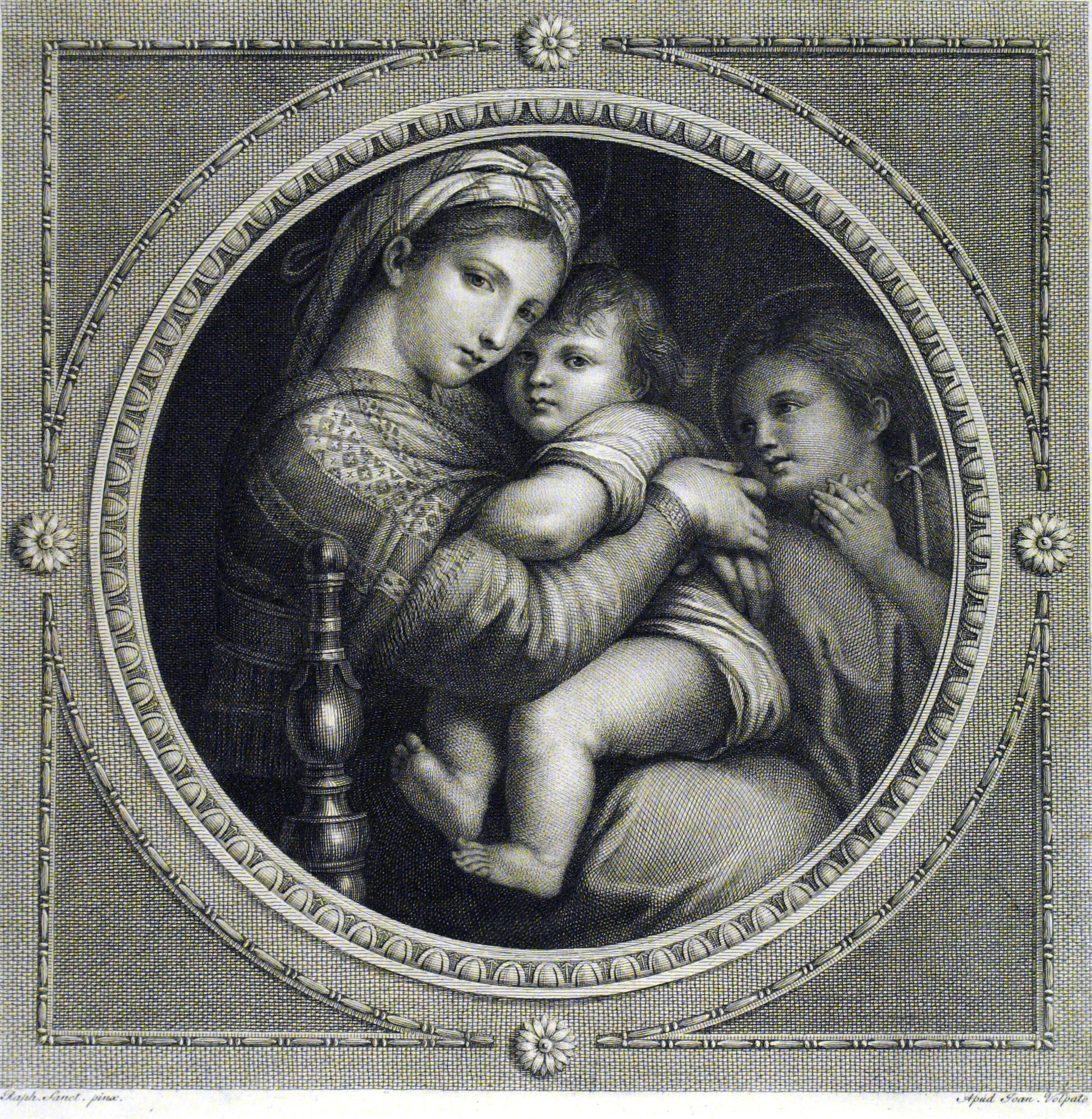The engraving presented at the exposition reproduces Raphael’s painting Madonna Della Sedia – an image of the Virgin Mary and the Baby. As the legend has it, Raphael created this painting when he saw a peasant woman breastfeeding a child on the steps of one of the Roman churches. Struck by her beauty, he lifted the bottom of the old barrel and made a sketch later turned into a picture. Along with the Sistine Madonna, this painting is one of the most famous works by the master. The painting was created in 1514: during the so-called Roman period of the master’s creativity.
The image is currently kept at the Pitti Gallery in Florence (Italy). Giovanni Volpato (1738-1803) was one of the interpreters of Raphael’s works; he was an Italian engraver, draftsman, and author of an essay on the principles of drawing illustrated by 36 engravings. Until the age of twenty, Volpato was engaged in painting fabric patterns, then his focus was drawn towards a cutter; his first engravings were a great success, so the young artist went to Venice, to famous Francesco Bartolozzi, under whose guidance he perfected his art of engraving.
From the 1780s he lived in Rome, where he became quite famous. His workshop was often visited by noblemen (for example, in 1784 the Swedish king Gustav III visited him). Engravings by Volpato after the works by Raphael and other famous masters of Italian art, as well as after ancient sculpture, were very popular among collectors. Volpato worked in Venice, Paris, Parma, and Rome. He engraved after Leonardo da Vinci, Correggio, Poussin, Lorren, Guercino, and Caravaggio. In 1785, in Rome Giovanni Volpato opened a factory for the production of bisque (porcelain, not coated with glaze) that reproduced antique sculpture stored in museums of Rome, Naples, and in private collections.
The Volpato family intermarried with the family of other famous Roman engravers: Volpato’s daughter Domenica got married to the engraver Rafael Morgen. Giovanni Volpato was one of the tastemakers for antiquity in Rome, he enjoyed great fame and authority in art circles of the late 18th century, was a member of the Academy of Fine Arts in Venice, Verona, and Parma. After the death of the master in 1808, a monument in his honour was reared. The author of the monument was famous Italian sculptor Antonio Canova. The presented engraving was received by the museum in 1919 from the estate of Baryatino, Tarussky District, Kaluga Province, as part of a private art collection of the Gorchakov’s princes.



